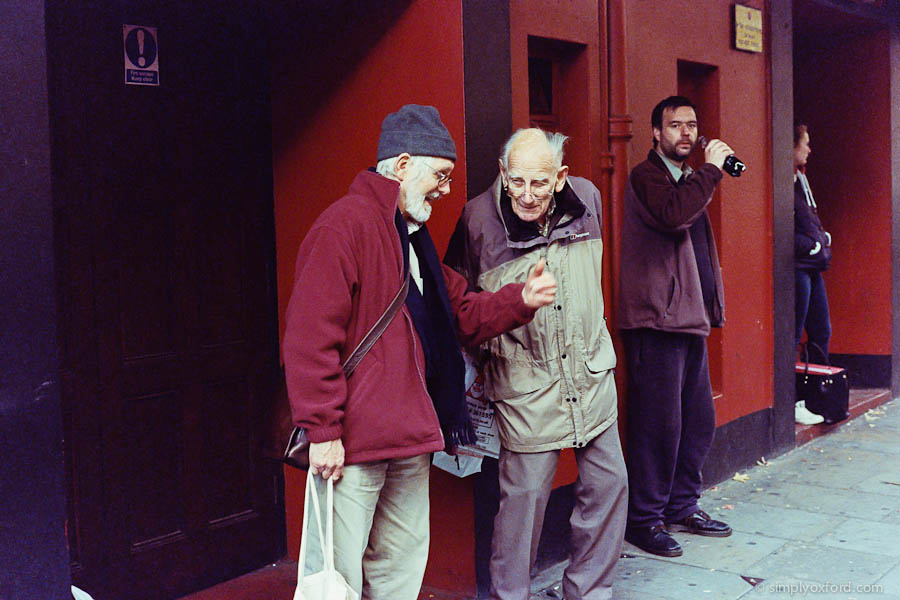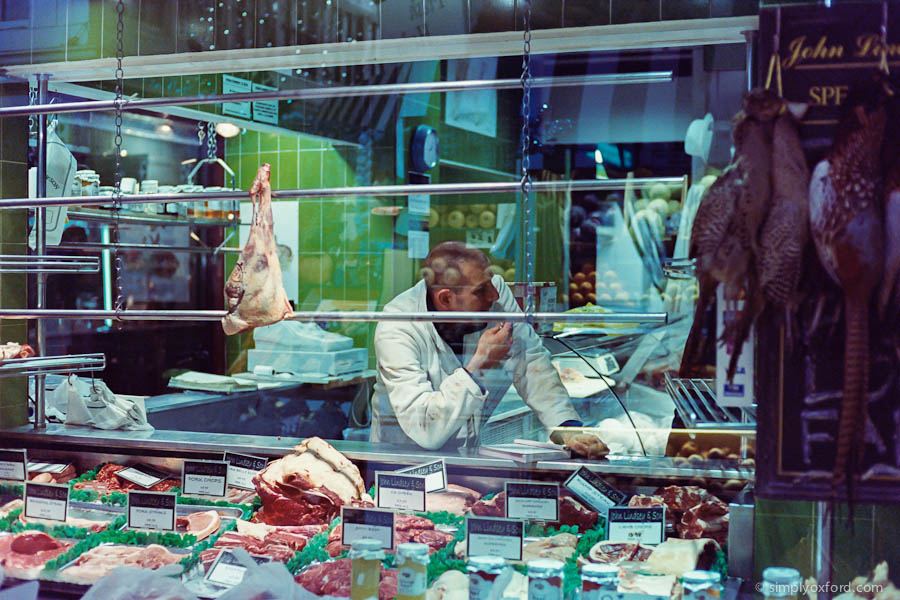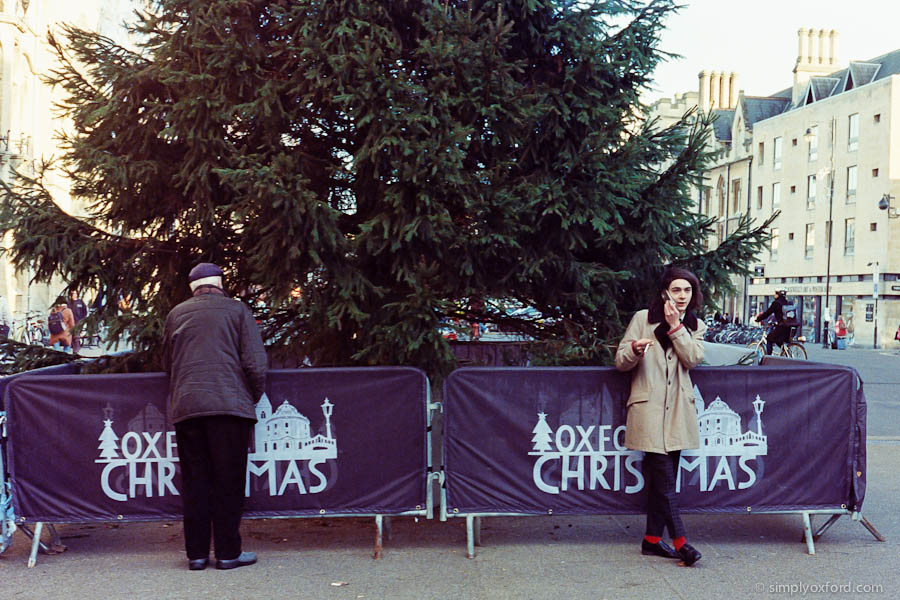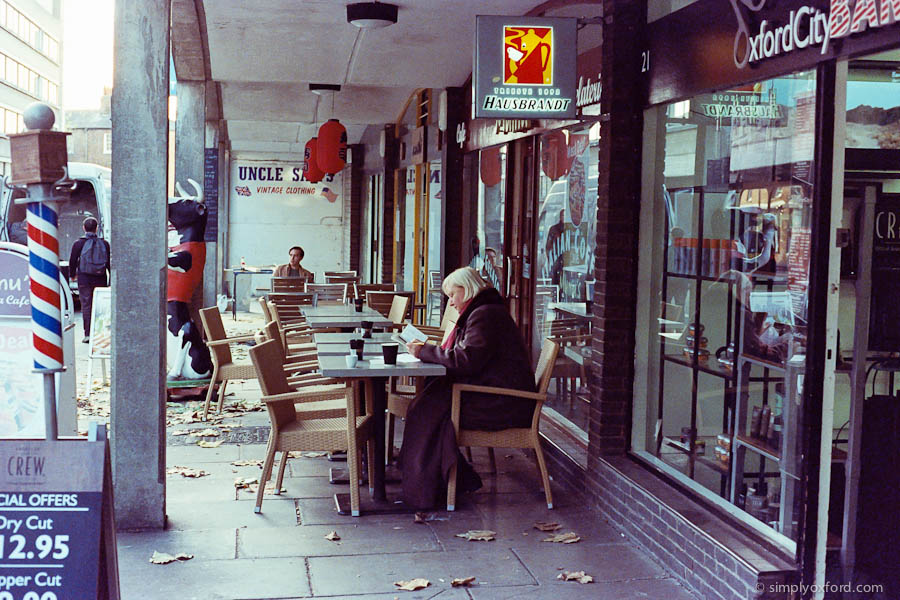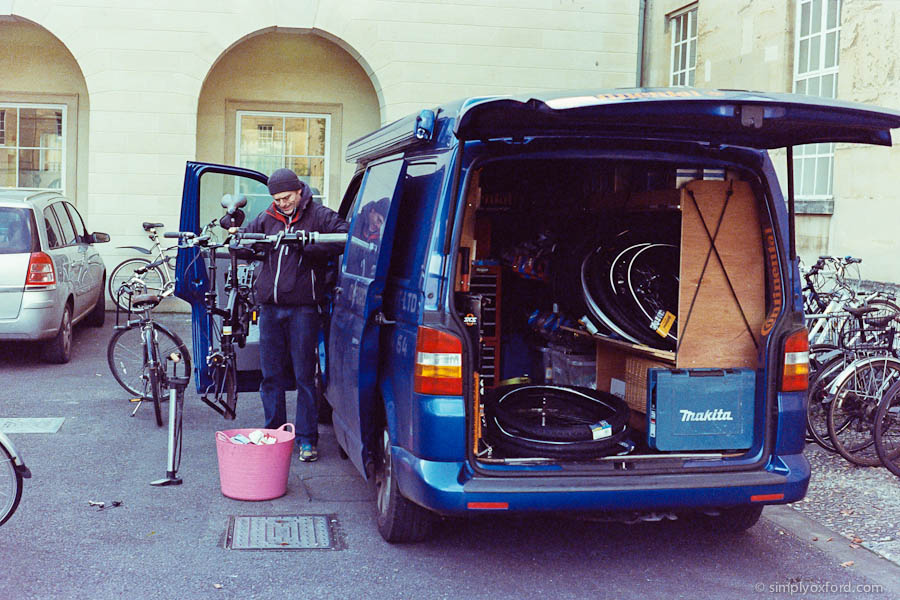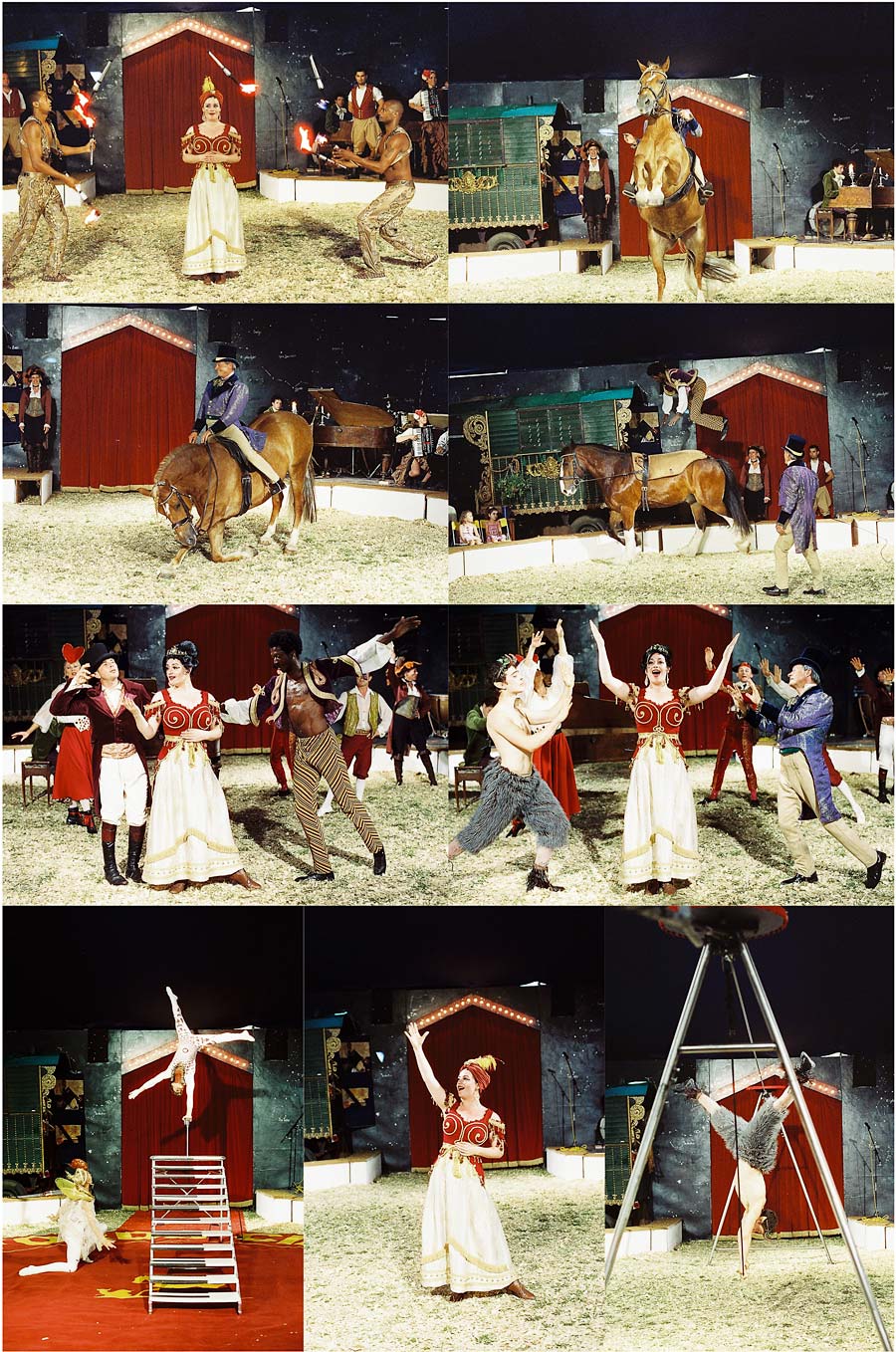Whenever I want to test out any tungsten balanced film I tend to either head for the Ashmolean Museum or to Clements & Church – the tailor’s on Little Clarendon Street and sometimes I will visit both places during the same lunch break as I did last week when I wanted to test out some Kodak Vision 3 500T motion picture film. This is the exact same film that is used by movie studios in Hollywood and around the world. I really like the colours you get with this film and although it takes longer to develop than regular colour film (because you have to remove the black remjet coating from the non-emulsion side of the film), with extra time and care it can be done with just hot water and a sponge which is what I used on this roll.
[Tech info:] Leica M2, Voigtlander 50/1.5 Nokton, Kodak Vision 3 500T, Rollei Digibase C41 kit, Pakon scan.




